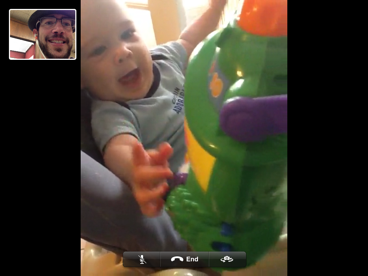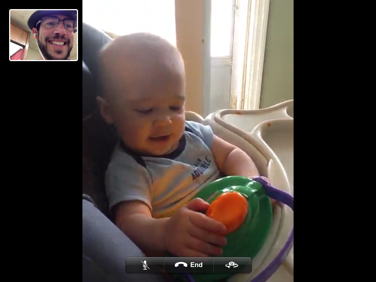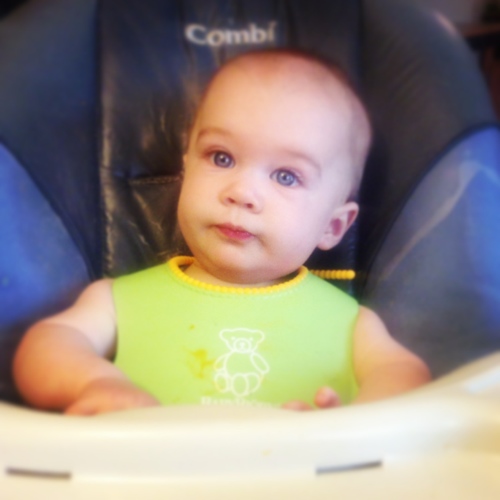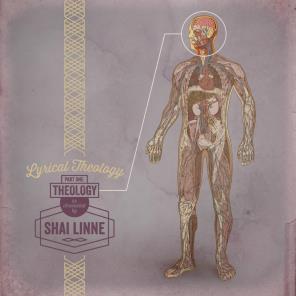Everyone loves a good story. Whether it be an action story, a drama, a comedy, tragedy, romance, etc., a well told story is likely to capture the attention of anyone willing to listen. And I’m quite certain that most could recall in their minds one story that rises above all others. For me, one of those is Lord of the Rings…all three. It encompasses everything necessary to make a good story and brings them together into a drama that holds the reader captive from beginning to end. But there is one story that rises above all the rest, and this one is true: the story of Jesus Christ. It is the climax of this story we celebrate at this time every year. Jesus Christ died for our sins, rose from the grave and ascended into heaven, thus defeated sin, death and Satan and secured the everlasting salvation of his people. This “Christ event” was the climactic event in an ongoing struggle between good and evil, a struggle that began in Genesis 3:15:
I will put enmity between you and the woman, and between your offspring and her offspring; he shall bruise your head and you shall bruise his heel.
Christ is this “Seed of Woman” and he defeated the Serpent at the cross (Col. 2:15). The rest of the story is him bringing in the fullness of his Kingdom.
What a story! But, you might ask, what does this have to do with this post’s title? Well, as you might have guessed, the title is a reference to the book of Revelation. But before we go further, read this:
Ҧ Then a great sign appeared in heaven: a woman clothed with the sun, and with the moon

(Photo credit: Wikipedia)
under her feet, and on her head was a crown of twelve stars. She was pregnant and was screaming in labor pains, struggling to give birth. Then another sign appeared in heaven: a huge red dragon that had seven heads and ten horns, and on its heads were seven diadem crowns. Now the dragon’s tail swept away a third of the stars in heaven and hurled them to the earth. Then the dragon stood before the woman who was about to give birth, so that he might devour her child as soon as it was born. So the woman gave birth to a son, a male child, who is going to rule over all the nations with an iron rod. Her child was suddenly caught up to God and to his throne, and she fled into the wilderness where a place had been prepared for her by God, so she could be taken care of for 1,260 days. ¶ Then war broke out in heaven: Michael and his angels fought against the dragon, and the dragon and his angels fought back. But the dragon was not strong enough to prevail, so there was no longer any place left in heaven for him and his angels.So that huge dragon—the ancient serpent, the one called the devil and Satan, who deceives the whole world—was thrown down to the earth, and his angels along with him. Then I heard a loud voice in heaven saying, “The salvation and the power and the kingdom of our God, and the ruling authority of his Christ, have now come, because the accuser of our brothers and sisters, the one who accuses them day and night before our God, has been thrown down. But they overcame him by the blood of the Lamb and by the word of their testimony, and they did not love their lives so much that they were afraid to die. Therefore you heavens rejoice, and all who reside in them! But woe to the earth and the sea because the devil has come down to you! He is filled with terrible anger, for he knows that he only has a little time!” ¶ Now when the dragon realized that he had been thrown down to the earth, he pursued the woman who had given birth to the male child. But the woman was given the two wings of a giant eagle so that she could fly out into the wilderness, to the place God prepared for her, where she is taken care of—away from the presence of the serpent—for a time, times, and half a time.Then the serpent spouted water like a river out of his mouth after the woman in an attempt to sweep her away by a flood, but the earth came to her rescue; the ground opened up and swallowed the river that the dragon had spewed from his mouth. So the dragon became enraged at the woman and went away to make war on the rest of her children, those who keep God’s commandments and hold to the testimony about Jesus. And the dragon stood on the sand of the seashore.”
Well? Hopefully, you read it like you would any good story. If not, read it again, and follow the plot. It’s twists and turns. Get caught up in the action, the close calls and epic battles. Ask yourself, “who is this woman?”, “who is the dragon?”, “what’s with the child?” Does any of it sound familiar? “Why is there a war in heaven, and how is it that this woman and child escape this fierce dragon?” Try to figure it out like you would any mysterious drama that you’re not quite sure about until the very end. That’s part of the excitement…trying to figure out the mystery! This is an epic drama, a perplexing mystery. This is a good story. But even more importantly, it is God’s word and is extremely important for our lives as believers.
Homework: Go read Revelation 1-12. Think of it as a story. Get involved. Ask questions. When you get to chapter 12, think about how it relates to what goes before…then come back, scroll down and finish reading this….
.
.
.
.
.
Back? Okay, lets talk through the scenes:
Scene 1: Signs in Heaven
John sees two signs in Heaven. The first, a woman with a crown of 12 stars on her head. She is clothed with the sun and the moon. What might the number 12 remind you of? Twelve disciples maybe? And what about the 12 tribes of Israel? 12 is an important number in Scripture, and in these two examples it seems that it represents the people of God. If you know your Old Testament well, the stars, son and moon might remind you of Joseph’s dream, in which the stars, sun and moon all bow down to him. We know that all Israel descended from Jacob and his sons, so perhaps this woman represents Israel, the Old Testament people of God? The woman is in great pain because she is about to give birth to a male child. Who is this child? Any guesses? When you think of a woman giving birth in the Bible, what first comes to mind? Exactly! Mary and Jesus. But this woman isn’t just Mary, but rather Mary is one person in the group that the woman represents. Mary was a Jew, and thus so was Jesus. The picture we have here, then, is that of Jesus descending through the line of Israel (think Matthew 1:1-11). The second sign John sees is a fierce red fire breathing dragon. Who might this be? Clearly the dragon is an enemy to the child to be born and wants to destroy him as soon as he is born. Any guesses? It seems pretty clear that the dragon is the Devil, the enemy of God, hell-bent (literally) on wiping out the promised Messiah, and it seems as though he will succeed! But something happens…the child is caught up to the throne of God before the dragon can devour him. He is rescued! So if the woman represents the OT people of God, and the child represents Christ, then the child being caught up before the dragon can devour him must represent Christ’s victory over Satan. His entire life, death and resurrection, and ascension are encapsulated in this birth and rescue into heaven. Christ is victorious!
Scene 2: War in Heaven
The next paragraph describes a fierce war in Heaven. To determine what this scene is meant to convey, first consider when this war takes place. Two possibilities immediately arise. First, this war could take place after the previous scene when the child was caught up to heaven. Maybe the dragon followed him up to Heaven? The idea being that the battle was the necessary consequence of Satan following the child. But how does the woman, who is seen in Heaven along with the Dragon, end up on earth? The dragon is thrown down in scene two, yet no such movement is attributed to the woman.
The second possibility is that this scene is another description of the events of scene one, kind of like two camera angles on the same football game. This would mean that this war is not the chronological result of the child’s ascent, but rather it is another depiction of the same event. Thus, in the first scene, Christ’s victory over the Dragon is pictured as his being caught up to heaven, while in the next scene it is pictured as the Dragon being thrown down to earth. I think this is likely for a few reasons. First, the language itself does not indicate an ensuing event. 12:1 begins in a similar fashion and introduces recapitulation (a retelling of the same events). Also, the next scene (13-18) is clearly subsequent, and it adds “and when”, referring to a previous event which must necessarily take place before what follows (the Devil must be thrown down before he can see that he is thrown down). Finally, the gospels depict a war between the Seed of Woman and the Serpent throughout Christ’s life, culminating in his death, resurrection and exaltation. The battleground was not in heaven, but on earth! So John here is depicting the heavenly counterpart to what took place on earth (cf. Matt. 16.19).
But why picture Christ’s work as a heavenly war between angels? First, angels in the OT are often depicted as the mighty arm of Yahweh. His power is portrayed by multitudes of angels doing his bidding. Also, Michael held a unique role in protecting Israel and contending with the Devil (see Dan 10:13, 21; 12:1; Jude 9). Second, in contrast to ancient combat myths in which the two opposing powers are on equal footing, John depicts a “non-combat” myth in which the servants of Christ vanquish the enemy with ease. Even so, we find the most direct answer in the text itself, and it has to do with what Christ’s victory on earth accomplished in heaven. The Dragon, identified as “the ancient serpent…the Devil and Satan…” is the ultimate enemy behind all attacks on God’s people, and only the first stage of his defeat has taken place: the elimination of his accusation of believers before God’s throne. Part of the purpose of chapter 12 is to explain why a defeated foe still rages on earth in the form of intense persecution by worldly powers. The answer is that in losing his place of accusation in Heaven, he has been “thrown down” to earth, where he still rages (12:9). The second stage of his defeat will not take place until he is “thrown down” from the earth into the second death (20:10). Though the Dragon’s defeat here is preliminary, it is nonetheless decisive and guarantees the final victory. It is a cause for praise!
Interlude: Praise in Heaven
Because of the dragon’s defeat, all Heaven erupts in praise. What does it mean that the Accuser has been thrown down? The apostle Paul has the answer,
Who will bring accusation against God’s elect? God is the one who justifies, who is the one who condemns?! Christ is the one who died, moreover was raised, who is also at the right hand of God, who also intercedes for us” (Rom. 8:33-4).
This provides explicit commentary on John’s vision: by virtue of Christ’s victory – his life, death, resurrection, ascension to God’s right hand and his continual intercession – Satan is rendered incapacitated when it comes to bringing accusation against the elect before God’s throne.
Also, in John 12:31-33 the same author writes:
now is the judgment of this world, now the ruler of this world will be thrown out. And when I am lifted up from the earth, I will draw all to myself.
This is what it means that “the salvation and the Kingdom and the power of God have come.” Christ has defeated Satan, our sins are justly forgiven and the Father, because of Christ’s shed blood, is drawing all his people to himself through the Holy Spirit. The accuser is thrown down, and his time is short.
Scene 3: the Dragon’s Rage
The final scene might seem like a strange ending to our story. In one breath, the enemy is defeated, and in the next he is persecuting the people of God. First, notice that in light of Christ’s work, the woman now represents the people of God post-Pentacost. That is, she is the corporate body of Christ. I think we find our answer to this strange ending in something said previously.
And they conquered him [the dragon] by the blood of the Lamb and the word of their testimony, for they loved not their lives unto death.
In other words, the people of God conquer in the same way that Christ did. We do not love our lives to the point that we would deny Christ to save them. Anytime a Christian remains faithful to the point of death, it is another nail in the coffin of the enemy. Notice that no matter how hard the dragon pursues the woman, she is always supernaturally protected. This scene envisions God’s spiritual protection of his people in the midst of great tribulation. The “earth-dweller” is a technical term in Revelation that refers to those who follow the dragon rather than Christ. It is they who should beware. But we rejoice in the midst of suffering and the dragon’s rage, for as we conquer the dragon is that much closer to his eternal incarceration…he is bound for the lake of fire and it is by the faithful testimony of believers to the point of death that he makes his way there! Does the dragon rage? Yes. Are we afraid? No! For the accuser is cast down, and soon he will be forever cast out. He is conquered by the blood of the Lamb, and he will be vanquished by the Lamb’s wrath (Rev. 20.7-10).
Christ is risen, he is risen indeed. His life and death and resurrection demonstrate his absolute authority over Satan and all the enemies of God. We conquer because he conquered, it is by his death that we live, and by his death death will one day die!
So, What Do a Pregnant Woman and a Dragon Have to do with Easter? In light of Revelation 12, you tell me!
(Now go and read the rest of the story!!)













